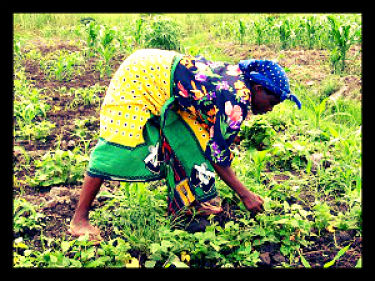10 Ways to Help Poor Farmers and Their Communities
 Food is one of the most basic human rights and needs: without adequate, nutritious food, people are unable to work and, in some cases, live. Almost a billion people in the world today are chronically undernourished, and many more are food insecure, meaning that they do not know where their next meal will come from. About three-quarters of those in Africa that live off of $1 a day are subsistence farmers. Helping subsistence farmers grow more food is key to lifting rural communities out of poverty. The following are some of the methods the Millennium Villages Project uses to help poor farmers, in its pursuit of the Millennium Development Goals in Africa. Here are 10 ways to help poor farmers.
Food is one of the most basic human rights and needs: without adequate, nutritious food, people are unable to work and, in some cases, live. Almost a billion people in the world today are chronically undernourished, and many more are food insecure, meaning that they do not know where their next meal will come from. About three-quarters of those in Africa that live off of $1 a day are subsistence farmers. Helping subsistence farmers grow more food is key to lifting rural communities out of poverty. The following are some of the methods the Millennium Villages Project uses to help poor farmers, in its pursuit of the Millennium Development Goals in Africa. Here are 10 ways to help poor farmers.
10 Ways to Help Poor Farmers and Their Communities
1) Protect and preserve the natural environment: Without a healthy natural environment where native flora and fauna live productively, long-term sustainable agricultural practices will fail. Farms must be developed in conjunction and cooperation with local ecology, not at its expense.
2) Implement community – specific programs: Every region has unique characteristics and therefore unique needs. Individualized programs that meet the needs of specific regions are more likely to succeed. This is the approach used by the Millennium Villages Project.
3) Teach and implement sustainable farming techniques: Farming techniques such as agroforestry, organic agriculture, and permaculture are more sustainable and practical on a small, rural scale. Poor farmers need to learn about these techniques and have access to the resources they need in order to implement them.
4) Build and maintain soil productivity: Healthy soil is the foundation of a healthy farm and leads to increased crop yields. Rebuilding soil after intensive cultivation is necessary to maintain soil productivity. Essential soil nutrients can be replenished through techniques such as fertilization, composting, inter-planting, and crop and field rotation.
5) Sustainable water access: A consistent water source is necessary for growing crops and for human survival. Rainwater harvesting systems and wells can provide water to a community, while drip irrigation systems give farmers access to water for their crops.
6) Increase sustainable crop production: Increasing crop yields is important to improving food security and fighting undernourishment. Farmers need access to high-quality seeds of appropriate crops, as well as information about planting, growing, harvesting, and crop management.
7) Economic organization: Farmers need a way to connect with customers in nearby communities in order to sell their products. Additionally, small-scale farmers can benefit from farmer cooperatives, wherein all the farmers in a community combine their resources in order to receive a better price for their crops. Aid organizations need to invest in the infrastructure and education necessary to create viable economic systems for farmers.
8) Supplement programs for newborns and their mothers: Even with an adequate food supply, pregnant and nursing mothers and their young children have unique nutritional needs. They need more protein, folate, calcium, and iron, as well as more calories.
9) End subsidies to wealthy US farmers: One Oxfam study showed that ending subsidies to wealthy US cotton farmers would do more to help Africa’s poor than the amount of aid they receive now. Farm subsidies drive down the prices of US-grown crops, making it impossible for small-scale farmers abroad to compete.
10) Improve food security: This means making sure that everyone in the community, including farmers, consistently has adequate calories and nutrition. Food security can be improved in many ways, including building food storage facilities, providing access to fuel-efficient cookstoves, and sourcing food locally, just to name a few.
– Kat Henrichs
Sources: Borgen Project
Photo:
